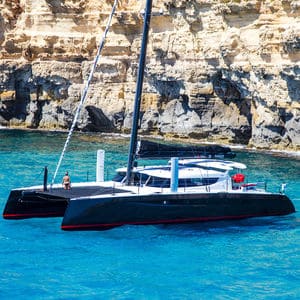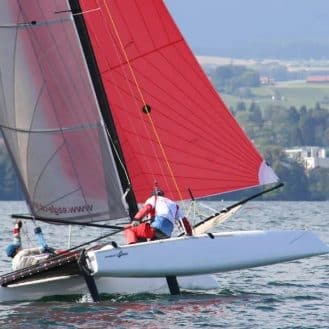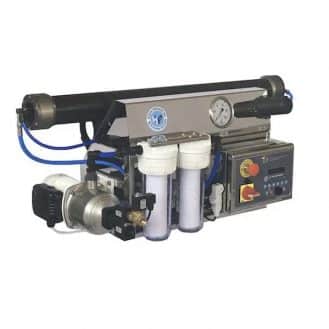In this section, we will focus on the main materials used in the construction of the hull: fiberglass, carbon and aluminum.
Fiberglass: This is the most widely used material for the construction of sailboats, especially for the hulls of mass-produced cruising sailboats. Combined with resin, fiberglass allows good quality construction, relatively light (compared to steel or wood, for example) and at a reasonable cost. It began to be used extensively in sailboat construction in the 1960s, so today we have a good idea of its longevity in contact with water. This is pretty good, but still needs a little care in order to last. Fiberglass is protected by a gelcoat (outer layer of finish and protection) and this can become porous over time, which can cause problems on the fiberglass itself.
Carbon: This is the flagship material in the construction of racing yachts since it has a very good ratio between lightness and rigidity, the 2 qualities sought after to obtain the best performance. The weight savings for the same hulls can be up to 50% between a carbon construction and a fiberglass one. But in addition to its much higher cost, its extreme rigidity can also represent a drawback: the lack of flexibility can lead to irreparable breakage.
Aluminum: This material has an excellent ratio between strength and lightness and doesn’t rust. These qualities make it the preferred material for the construction of ocean cruisers. However, aluminum is subject to electrolysis (an electric current that forms between two submerged metals), so you must be careful with the sailboat’s electrical circuit and protect the hull well with the help of anodes.

HH Catamaran carbon sailboat

Alubat Chantier Naval aluminum sailboat














